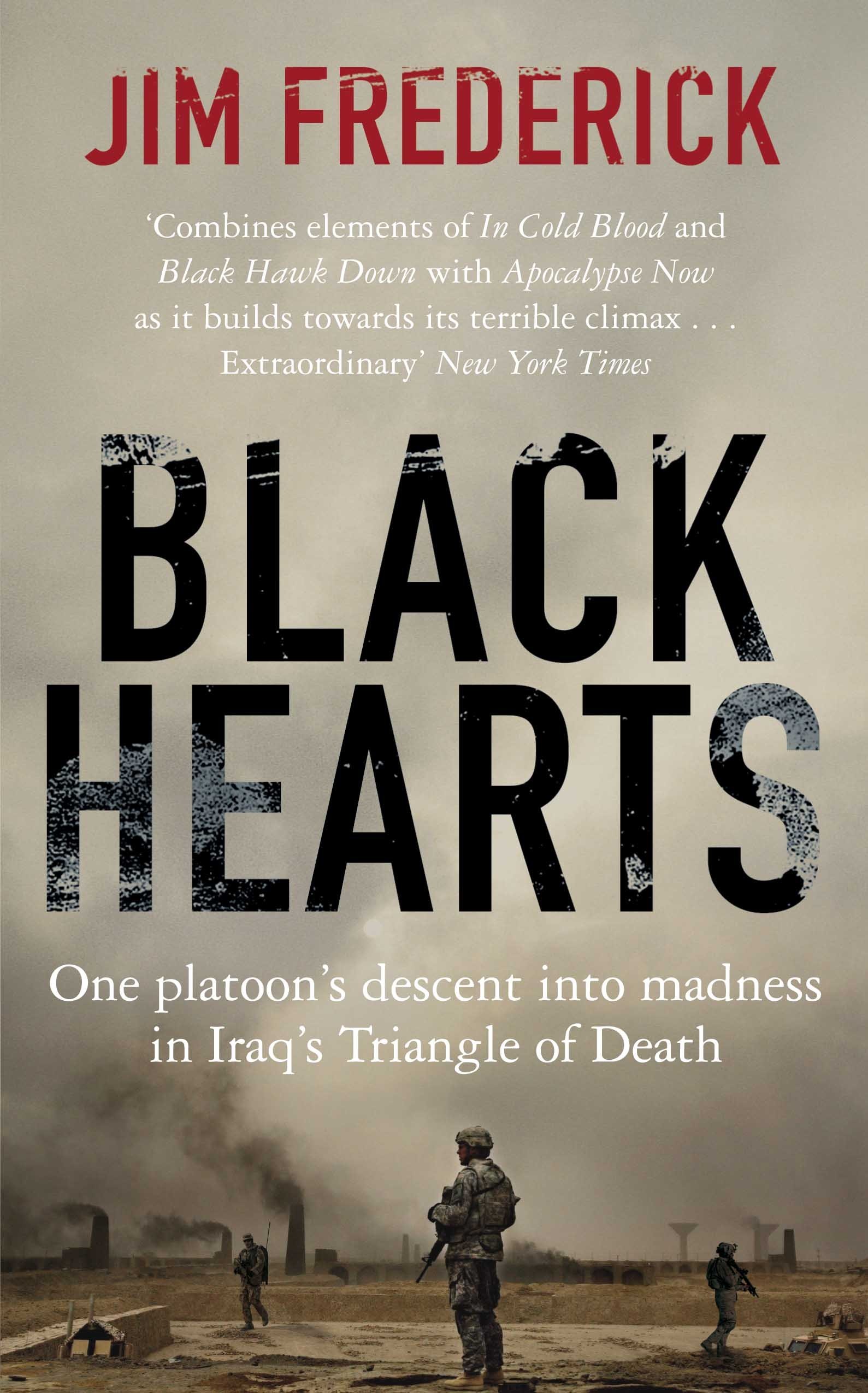Black Hearts: One Platoon's Descent into Madness in Iraq's Triangle of Death is a book, published in 2010, by Jim Frederick. The back cover describes the book as the 'gripping true story of a platoon from the 502nd Infantry Regiment (known as the Black Heart Brigade) and the widespread breakdown of discipline that resulted in depression, drinking and horrific brutality, culminating in the rape of a fourteen-year-old Iraqi girl and the cold-blooded execution of her family. This is a story about failure in the chain of command, sagging morale, and the consequences of crossing the thin line of morality in war'.
The book is available for purchase in a range of electronic and hard copy formats from a number of retailers (online and otherwise). There are also a few copies available from the Defence Library Service.

Black Hearts: One Platoon’s Descent into Madness in Iraq’s Triangle of Death by Jim Frederick, 2010
While it's quite a confronting read, there are lessons in this book for everyone. If you want your team to think more about ethics and morality, peer pressure, creating an appropriate command climate, dealing with the realities of operations, military history, officer/NCO roles and responsibilities, mental health, preparation for deployment, leadership and a host of other issues relevant to the military professional, have them read this book and then talk or write about it.
The following suggestions are designed to help maximise the learning and developments benefits of reading Black Hearts. They should be equally useful for a discussion in the mess, a PME session in a unit and for self-directed study.
Step 1: Read the book
This is a critical first step. Try to plan some regular time in your daily or weekly schedule to read. It doesn't need to be hours at a time – a small amount of time consistently is the best way to go. Luckily, Black Hearts is a pretty easy read – it's even hard to put down sometimes.
Step 2: Discuss the book
Discussing your thoughts and opinions can be the best thing about reading. Get together with some peers, or use a discussion to teach your team. The questions below should generate some useful debate:
- 1 Platoon lost a number of leaders during their deployment. How does a section / platoon / company rebuild after losing a leader? Is it possible to effectively rebuild while in combat?
- Could something like this happen in our Army? Why or why not?
- There is a fine line between mission command and not providing adequate supervision. What things should commanders (at all levels) consider in achieving a balance?
- The book implies that the rape and murder were a disaster waiting to happen. Do you think it could have been prevented? How?
- Imagine yourself as a member of 1 Platoon. What would you have done differently?
You could TEWT some of the scenarios described. Have your team read Chapter 4 and then develop a plan and a set of orders for conducting the same operation. Particular attention should be paid to 'troops to task', the rotation plan, and admin and log.
Alternatively, you could choose an incident, or an individual, from the book to consider as a case study.
Step 3: Reflect
Reflection is an important element of learning. It allows us to consider theories or events, and understand how they might apply to us. You could reflect using the questions above, or use the 'what, so what, now what' process.
- WHAT did I learn from reading Black Hearts?
- SO WHAT does that learning mean for me as a military professional?
- NOW WHAT am I going to do about (with) what I’ve learned?
Writing this down in a journal, essay or blog post is a good way to consolidate your learning.
Black Hearts highlights a range of issues for consideration by military professionals at all rank levels. It's a really good read, and provides a wealth of opportunities for deeper learning.










J Diem